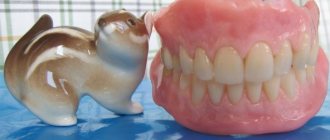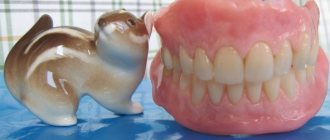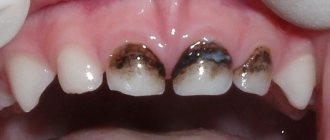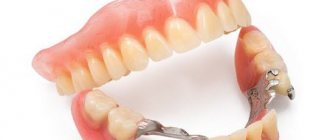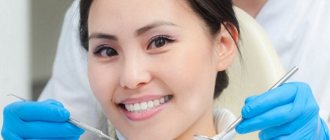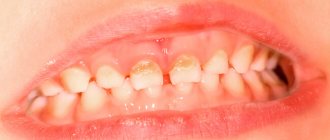Every six months, Marina travels from Moscow to Ryazan to see a dentist whom her friends introduced her to. On Friday she comes to the city, spends the night in a hotel, and spends Saturday at the dentist (one filling costs 1,500 rubles, while in the Moscow clinic they charged about 5 thousand for a visit) and in a beauty salon (coated manicure – 400 rubles). Nikita goes to Zheleznodorozhny near Moscow for dental treatment, where his sister lives: the last time he paid 2,700 for a filling, pain relief and an appointment (in Moscow it cost him 3-4 thousand).
Development of dental tours in Russia
The “late start” of this type of tourism in Russia is due to the fact that the USSR pursued a foreign policy that made it impossible to use the services of a dentist in another country.
After the borders were opened, Russians went not for more affordable prices, but for the latest high-quality services. This has become the main difference between domestic dental travel and that accepted in other parts of the world.
At the same time, domestic dentistry began to actively develop. The availability of modern equipment and the latest materials, the opportunity for specialists to participate in world-class symposia or any seminars and the exchange of experience with foreign colleagues have prepared the basis for the full promotion of private dentistry in the Russian Federation. An increasing number of patients in public clinics are choosing convenient treatment in a private dental office.
The demand for private dentistry is growing day by day. More than 9,000 masters, graduates of 2 dental institutes and 44 faculties that operated in the country before the collapse of the USSR, chose to get a job not in public, but in private dental clinics, or opened their own business.
Dental tourism: Hungary
Known for its mineral springs, lakes, swimming pools and spas, the country has long been a popular destination for health tourism. Now, high-quality and inexpensive services from local dental clinics are in high demand among Europeans and North Americans.
Hungary has the highest number of dentists per capita in the world, and dental clinics boast the most modern equipment. Since the country joined the European Union in 2007, the qualifications of Hungarian specialists and the quality of medical services have become as close as possible to Western European standards. Since 2008, Hungary has been the European leader in the dental market, occupying about 40%.
Russians, residents of the Central European region and other adherents of dental tourism come to Hungary for regular examinations and cleanings. North Americans are choosing a wider range of services, including cosmetic restoration, dental reconstruction and implantology. Even taking into account flights and accommodation, such procedures cost at least half as much in Hungary as at home.
Geography of trips
This type of tourism is widespread both in Russia and abroad. If we take our country, the phenomenon is most popular among residents of Moscow and St. Petersburg. So, the most popular places within the country:
- Ryazan, Klin, Zheleznodorozhny;
- Omsk and Novosibirsk;
- Tver, Riga, Krasnodar;
- Volgograd.
It is in these cities that they provide high-quality services for treatment, whitening, insertion of new fillings and other operations related to teeth.
As evidenced by numerous reviews from those who went on dental trips, this service is in great demand in France, where it is known under another name - “healthy vacation”. And the French are practical people.
On a global scale, there is a certain division of geographical directions. It should be noted that in foreign countries, dental travel is popular mainly among people of retirement age. Depending on their place of residence, patients choose the following directions:
- pensioners from Austria, Germany and Britain go to Eastern Europe (Czech Republic, Slovakia, Romania, Poland) to straighten their teeth;
- Americans prefer traveling to Canada, Costa Rica and Mexico, since the cost of treatment within the United States, taking into account medical insurance, is much higher;
- Australians, Japanese and Chinese travel to Thailand;
- Uruguayans choose Argentina;
- Among Russian tourists, destinations of the former USSR (Ukraine, Belarus) and countries such as Turkey, the UAE, and Israel are also popular.
Dental services chosen by patients in another country
Due to the high level of medicine and relatively affordable prices, as well as a strong medical base, dental tourism is becoming increasingly popular. However, it is very important to carefully search for your dentist, as the doctor’s qualifications may not be sufficient.
Labor mobility
For countries within the European Union, dental qualifications must reach a minimum approved by the government of each country.[6] In this way, a dentist qualified in one country can apply to any other EU country to practice in that country, allowing greater labor mobility for dentists (Directives generally apply not only to the EU, but also to the broader designation of the European Economic zones - EEA). .[7] The Association of Dental Education in Europe (ADEE) is pursuing standardization efforts to harmonize European standards. The ADEE Quality Assurance and Benchmarking Working Group's proposals include the introduction of accreditation procedures for EU dental universities, as well as programs to assist dental students completing part of their education in dental schools abroad.[8] Standardization of qualifications in the region mutually eliminates one of the barriers of perception to the development of patient mobility in this region.
Advantages and disadvantages
Dental tours have the following advantages:
- In any case, this is tourism. That is, you can see new places (for example, tour the sights of Uzbekistan or take part in interesting excursions along the Golden Ring), as well as get acquainted with another culture. This way, you will be able to combine business with pleasure.
- Quite fast treatment. Since the time of such tours is limited, the doctor cannot waste it and tries to do as much as possible for you in the shortest possible time. That is, you can treat caries, install a couple of implants and much more in a day.
- The likelihood of treatment from one specialist in one office. Many doctors in clinics in small towns are generalists. There are not enough specific tasks, so the doctor is forced to do any kind of work: cleaning, caries treatment, tooth extraction and much more. For this reason, you can undergo all stages of treatment practically in one office or within one clinic.
- Saving. It is no secret that maintenance and rental of premises in the capital and big cities are expensive, and the costs for them are included in the cost of treatment. Therefore, of two identical doctors who work with the same materials and equipment, the price of treatment is more affordable for the one who is located in the province.
- A toothbrush along with toothpaste as a gift. Compared to the cost of treatment, these gifts look funny, but you must admit, it’s still nice when you get something for free.
Now let’s look at the main disadvantages of a dental tour:
- Most treatments are either quite lengthy or require extensive preparation. For example, treatment of a periodontitis tooth takes about a month, or even more. Why not go to the doctor every month for another stage of treatment? And prosthetics in difficult cases usually takes a year or a year and a half - that is, you need to live near the clinic and constantly visit the doctor.
- Inability to quickly observe. Even after a simple tooth extraction, the patient is observed for another two days, since unforeseen difficulties may arise in the postoperative period. The same applies to such popular procedures as prosthetics, dental implantation, treatment of complicated caries - here in some cases the patient needs long-term observation, up to a couple of weeks. If the doctor provides treatment for 24 hours, and then the client goes home, the question arises who will observe him.
- No choice. Clients do not know where they will be sent or what specialists they will end up with. Basically, patients are contacted in advance by a travel company, which distributes applications to partner clinics. Therefore, there is a high probability of finding yourself at an appointment with a farrier, to whom local residents simply do not make an appointment. And refusing treatment is often also inconvenient - after all, you have traveled many kilometers, spent time and money on the tour.
- Responsibility. In any case, you will want to know who is responsible for the treatment. Who is to blame for the marriage and who, in an unfavorable case, will pay for another dental treatment. Of course, doctors are responsible for the services provided, but contacting them will be problematic. Not everyone will be able to travel to another city or even country for a consultation.
- Not the best quality clinics. Even in the provinces, the best clinics have many clients without dental tourists. And the price of treatment there is only slightly lower than the capital’s prices. For this reason, travel companies have to negotiate with empty private clinics, which local patients are afraid to go to. Visitors are unlikely to know or guess about this.
How to save money on dental treatment?
There are a number of other ways to save on dental treatment. Dental tour is not the only method. Let's consider other options.
- Free under compulsory medical insurance policy.
Every person has the right to free treatment, including dental treatment. Many people take advantage of this and go to regular clinics.
Many people do not know that there are a number of paid medical centers that accept patients under the compulsory medical insurance policy. You may have to pay for something, but the main treatment will be covered by the policy.
- 100 km from Moscow.
Many residents of the capital, for example, my friend, move 100 km from Moscow. He went through acquaintances to private providers who provide treatment at home. It was outside the city of Yegoryevsk.
Personally, I wouldn’t risk treating my teeth at home.
This moment can be used when traveling and on vacation.
- Discount coupons.
There are a number of websites that offer discount coupons for various services: beauty salons, exhibitions, hair removal, courses, including dentistry.
Prices in Russia
The price of medical services depends on the complexity of the operation and the location of the medical appointment. Let's look at the cost using the example of the most popular dental tourism destination, which is Ryazan:
- anesthesia - 250 rubles;
- treatment of caries - from 1400 to 2000 rubles;
- premium class prosthesis insert - 30,000 rubles;
- metal-ceramic crown - 5,000 rubles;
- whitening using the ZOOM system - 18,000 rubles.
The cost of services in countries far and near abroad should be clarified in the clinic that you have chosen as the place of treatment. However, savings in some cases compared to Moscow clinics are up to 60 percent.
The final cost of the tour depends on many factors and is most often announced to the customer before signing the contract.
In many cases, the effective price consists of the following components:
- prices for air or railway tickets in two directions;
- the cost of a taxi or transportation around the city;
- cost of living;
- the actual price of dental services;
- payment for intermediary services;
- other costs (issue passports or visas, etc.).

